[/caption]
Note: This is the first in a series of articles about Citizen Science projects, where science is not just for professional scientists anymore!
The desire to seek out others of a like mind must be coded into our DNA. Take any subject — music, literature, art, science, math, sports, animals — you name it, and there is a group you can join to share your interest with others. Or if you can’t find a group, then you can start one and see who joins in. Doug Ellison is a great example. His online forum Unmannedspaceflight.com (UMSF) has become a place where a combination of interest in space exploration and serious “Photoshopping” has taken on new proportions. But it is also a place where the line between amateur interest and professional science is starting to blur.
Plainly put, the images, mosaics and movies created by the participants at UMSF are stunning. Whether it be a panoramic view from the top of Husband Hill on Mars, recalibrated images from the Pioneer or Voyager spacecraft to create 3D renderings or maps of the planets, or a movie of Opportunity roving on Meridiani Planum, the work being done at UMSF is a feast for the eyes. And this is all being done by amateurs who don’t receive any compensation for their painstaking handiwork, except for the joy of sharing their images with each other and the public, and perhaps converting a few space exploration naysayers along the way. They do their work using cheap, free, or even personally-created imaging software, to generate their labors of love.
How it all began
Ellison’s interest in space exploration started with the Mars Pathfinder mission in 1997, where information and images from the mission were being shared online, just as the internet was starting to boom. But when his own country, England, led the Beagle 2 Lander mission to Mars in 2003, Ellison’s interest got a little more serious. “Being a Brit, I was proud of Beagle, and wanted to talk about it with others,” said Ellison, a media producer, “but I couldn’t find any online forums discussing the mission. So I started a Yahoo group, and about 40 or 50 people descended on it, and we posted updates about the mission.” And the online updates and discussions were serious – no talk about little green men, Martians or UFOs was allowed.
The Mars Exploration Rovers were also on Ellison’s radar, as he knew they were set to land just after Beagle 2, but he admits not paying all that much attention to the rovers. However, when all contact was lost with Beagle 2 after it separated from the Mars Express orbiter, Ellison turned his attention to the rovers. The firehose of images from the rovers was almost immediate after they landed in January 2004: Principal Investigator Steve Squyres and Pancam lead Jim Bell had both decided to post all the images online, making them available for anyone with internet access virtually the instant the data were beamed back to Earth from Mars.
“I saw all these JPEG images online at the rover site, and I couldn’t help myself!” said Ellison, who had also developed an interest in image editing. “I started making mosaics and movies from the rover images. And in the same way I couldn’t find anywhere to talk about Beagle, I couldn’t find a ‘sensible’ place to talk about the rovers, and where I could discuss the images.”

Ellison noted he hadn’t yet found the BAUT (Bad Astronomy Universe Today) forum, but he noticed that almost any website or forum where Mars was the topic, the discussion would “soon turn to anomalism, nut-jobbery, and crazy-talk, so I was determined if I couldn’t find anything I would start my own site to post my images, etc.,” he said. “And if someone came along and said something like, ‘Oh there’s a skull, and there’s cannon,’ I just wasn’t going to have it,” he said.
Ellison never advertised or “pimped” the site, and the first year things were pretty quiet, with just a few dozen people joining in who were doing their own mosaics or global maps. Then the Cassini mission came along, and those images also went straight to a publicly accessible website, so a Cassini/Saturn section was added to the forum; then a Mars orbiter section and a New Horizons section – any mission where the images were available.
“So it expanded from just being a site about the rovers to any spacecraft that was going around taking pictures,” said Ellison, “so about a year after I started the site, I re-named it unmannedspaceflight.com.”
While the site hasn’t exploded or gone completely viral, it has quietly expanded to about 1,800 active members and about 30,000 visitors a month. “It spikes when there’s something interesting happening, such as the Phoenix landing, but otherwise its fairly steady, with about 100 or so really active people contributing images, with an awful lot of people who just like to hang around and look.”
The ‘Old Days’ and Now
It used to be difficult to get images from space missions, with enthusiasts having to wait weeks or months for a print magazine or book to publish pictures taken by spacecraft. But the internet has changed all that, and in addition, attitudes among the previously exclusive science community seem to be changing as well.
“NASA really does try to make data as accessible to the public as it can,” said Emily Lakdawalla from the Planetary Society, who writes the Planetary Blog. She has been a member of UMSF since 2005, and as a planetary geologist, enjoys working with space mission images. “Anybody in the world with net access can get to all the data ever taken by nearly every NASA planetary mission,” she said. “It is sort of like discovering the back rooms of the Smithsonian collections — they display only a few percent of their artifacts. NASA captions and press-releases only a few percent of their missions’ data, but it’s all online, waiting for people to discover and use it. UMSF is a community of people who live to do just that — delve into the museum vaults, discover wonders that few people on Earth have ever seen, dust them off, restore them, and display them to public view.”
As amateurs, Lakdawalla said, they can take liberties with the data that scientists usually can’t allow themselves to. If a data dropout creates an ugly stripe across an otherwise pretty image, a scientist will usually not fudge the data to make it look better. An amateur needs to have no such constraints; they can “futz” with the images, and produce eye-catching, print-ready images out of something that would have otherwise not been very interesting to non-scientists.
“The wonderful thing about UMSF is that the community there generally takes exactly the right level of liberties with the data,” said Lakdawalla, “basically, enough fudging as is required to prevent the viewer from being distracted by artifacts of the imaging process, but little enough to let the original space data do all the talking.”
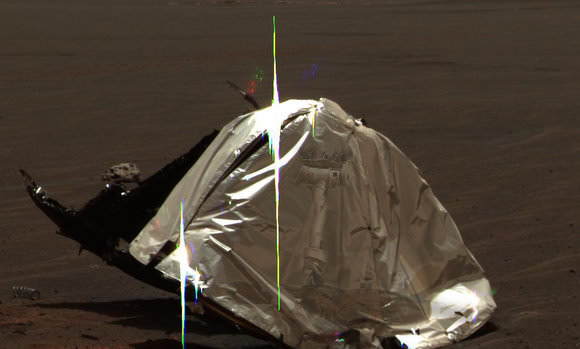
While there are many space-topic forums on the internet, UMSF is different for two very important reasons, said Stuart Atkinson, care worker for the elderly in the United Kingdom by day, who has been involved with UMSF since the old days of the Beagle discussions. “Firstly, because it has a strict – and strictly enforced – policy of not tolerating ‘off topic’ posts about such things as politics, manned spaceflight, alien babies or Bigfoots on Mars and things like that,” said Atkinson. “UMSF is, as its name suggests, a forum for discussing unmanned spaceflight – spaceprobes, basically, and if anyone comes along trying to flame, or cause trouble, or claim they’ve found a piece of wood or an alien skull in a zoomed-in-to-within-an-inch-of-its-life section of a Mars rover image then they’re in the wrong place.”
The strict “policing” of the site, performed by about a dozen or so moderators has created an environment where even scientists feel comfortable joining in on the discussions. “Planetary Scientist Ralph Lorenz has come over and talked about Titan’s dunes, and Alan Stern has joined in discussions about New Horizons, for example,” said Ellison.
Which is the other thing that makes it so special, added Atkinson. “Become a member of UMSF and you’ll find yourselves rubbing virtual shoulders with many of the men and women who actually work ON the missions… Mars Rover drivers, Deep Space Network operators, Mars geologists and climatologists, they’re all members of UMSF, and clearly love being able to take part in discussions about their work.”
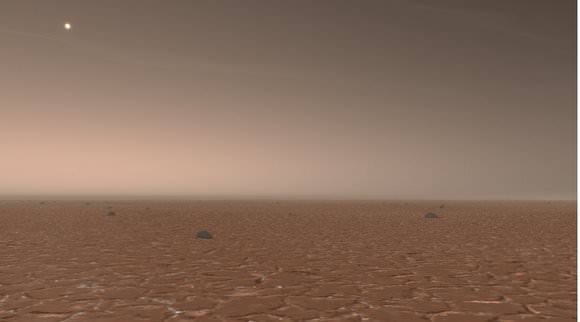
But not only have scientists joined in on discussions, they’ve come to UMSF to ask for help. Ellison said a highlight of his involvement with UMSF was when John Spencer from the New Horizons mission came to the forum asking if the members had any ideas for New Horizon’s flyby of Jupiter. “He came onto the forum and said, we’re planning the science sequence for the Jupiter flyby and do any of you have any ideas of when we should take pictures, just because they will be cool and interesting images. And he gave us the link for the tool that would show us the view from the New Horizons trajectory at a particular time, at any direction we wanted.”
Suggestions from UMSF members were put into an amalgamation of ideas from scientists and four ideas from UMSF were chosen for the flyby.
“I could not believe it, that my little forum had become an engine to come up with ideas, and these ideas got sent to a $800 million spacecraft a half a billion kilometers away,” said Ellison. “And New Horizons took this amazing picture of Europa rising up behind Jupiter. The fact that he came to us, asked us for ideas, and actually used them just was amazing.”
“New Horizons really exemplifies the best of amateurs and professionals working together,” said Lakdawalla. “All missions like to take advantage of “Kodak moments,” and the longer lived ones, particularly MER and Cassini, get the leisure to plan to take a few pictures just because they’re pretty, or significant. New Horizons wanted to do that but had a ridiculously short time between launch and Jupiter… It was a great use of amateur effort, for the right purpose — not to do science, but to do what the amateurs do best (and better than most scientists) — make pretty pictures.”
As an example of what UMSF does with images, Lakdawalla took image of Jupiter’s moons Io and Europa that was captured by New Horizons’ LORRI instrument (Long Range Reconnaissance Imager), combined it with another image taken by the MVIC (Multispectral Visible Imaging Camera) visible- and near-infrared spectrometer, to create a truly spectacular image of the pair of moons.
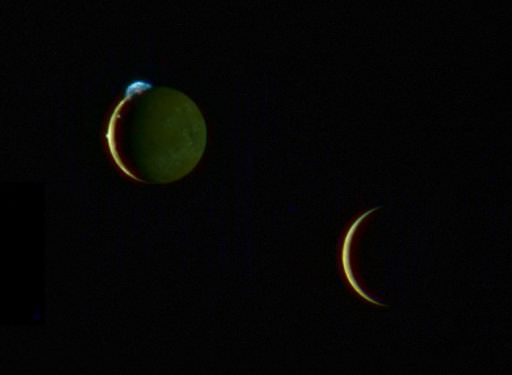
“Emily took the best data, combined them and made something better from it,” said Ellison. “I didn’t make the actual suggestion or create the actual picture but I’m very, very proud of those pictures because the people from New Horizons thought we’d come up with some sensible ideas and we did. It was an example of the amateur doing something truly spectacular.”
Ellison said starting UMSF has truly been life-changing. He has had the opportunity to meet scientists involved with the space missions, and even gave a presentation to the MER science team at Cornell University, which he said was “the highlight of my life.”
Images from UMSF have appeared on the cover of Aviaton Week, and several times on Astronomy Picture of the Day, including an incredible flyover movie of the Columbia Hills, and a great image from Opportunity of clouds and sand on Mars.
The work of another active UMSF member, James Canvin, showed up at a very special place: on the wall in the operations building for the Phoenix Mars Lander. It was visible during a visit by Sky at Night television show on BBC. “Recognition of that type, by people within the team running the mission itself is a huge honour,” said Canvin, who is a scientist for the United Kingdom’s main weather forecasting center. Canvin said image processing has become his main hobby, and countless hours have been spent writing the software to do the processing as well as producing the images themselves.

But perhaps the biggest reward of creating these “bootleg” images is the effect the images have on the general public.
“A big highlight is having my images seen (and getting positive feedback from) people who don’t normally follow spaceflight activities,” Canvin said. “I only ever post images to UMSF but occasionally I’ll see referrals coming from non-spaceflight related sites where somebody has re-posted the link with a “hey this is cool, look at this” type message. It’s nice that I have been able to help get the word out to a few people who might not have known what was going on Mars otherwise. During my time at UMSF I’ve really come to appreciate the value of working to bring the amazing sights of the solar system to as wide an audience as possible.”
Ellison also spends a lot of his time doing talks about space exploration at schools, and is working on applying for grant to do more activities with schools and even science centers. He also has plans for ways to make the tools created by the UMSF participants more accessible to more people by creating a “Wiki.” “What I want to do is extract the material and the knowledge that’s there collectively into a specialized Wiki around the things that get discussed,” said Ellison. “That will turn our sometimes idle banter into a usable, citable reference tool.” This would certainly be a tremendous resource for photography and digital imaging aficionados.
I Heart Spacecraft
UMSF is a true love affair with the images produced by our robotic spacecraft. “I was talking with (British historian) Allan Chapman,” said Ellison, “and he said this is amateur in the true sense of the word because amateur means love. And that’s true because people love doing this. We do it because it’s an adventure and it’s exploration that we can do.”
UMSF participants have created special tools to enhance the experience, like the Midnight Mars Browser written by Mike Howard. What began as a simple tool to automatically grab images when they became available, has evolved into an interactive tool that will download and sort the images, produce color composites, stereo anaglyphs and even re-project the imagery into virtual 3D space so that Pancam and Navcam imagery can be seen in context, site by site, sol by sol.
Once you start, creating your own images can also become something close to an addiction. “There’s a genuine chance for you to look at a little piece of the Mars that no one has set eyes on before,” said Ellison. “And that’s an incredibly powerful thing. The process how the pictures go online is all automated, and you think, ‘I should go to bed now, but the images will hit the web in about an hour, so I’ll stay up and wait for the pictures.’ And you make a mosaic and put it on the forum and then a hundred people can see this little bit of Mars that no one else has seen before.”
While in some people’s minds, what’s being done at UMSF brings up questions about the fair use of raw images from mission websites, it seems to point to a possible future where amateurs and scientists work together for the common good.
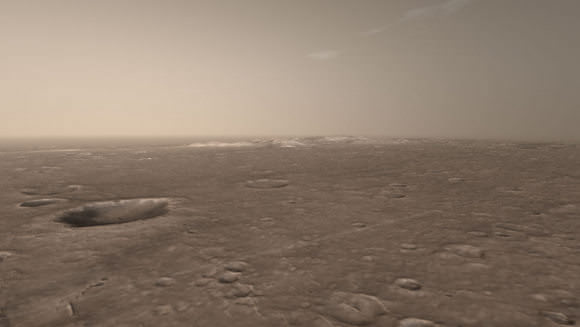
“Scott Maxwell (MER rover driver – see our three part interview with Maxwell) and I share a vision for a Mars 3.0,” said Ellison. “Mars 1.0 is when you have to wait for the press to come out with a single picture from a mission. 2.0 is roughly where we are now, where all the pictures come out and anyone can look at them. Mars 3.0 is finding a way whereby the enthusiastic public can contribute back in. I thought the New Horizons ‘Kodak moment’ was an example that it can work. It’s not sensible to hand the rover driving gloves off to amateurs or anything like that, but there has to be some sort of middle ground where there’s a type of ‘audience participation’ that can be done. The sheer numbers in the amateur community and the massively wide range of abilities they posses, they can actually make a contribution back to the missions.”
Ellison said he doesn’t know how it will eventually turn out, or even if a true amateur/professional partnership is even possible because of things like ITAR (International Traffic in Arms Regulations) and other restrictive laws that NASA and JPL must abide by.
But in the meantime, there’s much to enjoy from UMSF, even for the digitally-challenged. “Anyone can come and enjoy the pictures and watch what we’re doing,” said Ellison. “I’ve always maintained that you don’t have to register just to look at the pictures. So, come and click on the latest about Opportunity and look at the next day, and you’ll see someone will update the map, someone will make a new mosaic, and someone will make a movie: it will all happen and you can watch it. Or if you think you can wield Photoshop, and if you think you have some ideas, give us a try. As long as you don’t go into the realm of crazy, we’ll share what we know with you.”

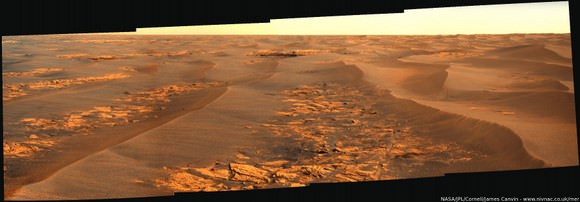
Nice work, congrats! Just a pity the site does not have some kind of user friendly gallery. Browsing for external links of images in the forum is little bit painful, and forcing you to spend a lot of time looking through posts and links that you may have only little interest for if image processing is not your hobby, but you rather just want to see the results..
An excellent article Nancy. I think I’ll pop over and check ’em out…
Policy: Dispassion in the use of thinking is not natural. It requires discipline instead. And discipline necessitates for rules.
With all the computer power and gigabytes of disk space at the disposal of anyone with a few dollars or pounds to burn, plus the information load of the Internet, it must be awfully tempting to anyone to feel like they are really there conducting and helping out with a space mission.
But the important difference between an amateur and a professional is that the latter has spent years of intense training, discipline, and school to be where they are now. That still matters the most no matter how powerful someone’s home computer may be.
By all means, the amateurs should play with their Mars images all they want – they might get lucky and find something after all, as the pros are often very busy doing the major work and can’t catch everything.
But at the end of the day, don’t forget there is a reason the professionals are who they are – they are the ones who made it possible for the armchair astronauts to get those images in the first place.
Can anyone say “Google Mars”?
Oops, I didnt realise that they already have Google Mars, even though it has the same are over and over.
How about a Google Europa. Or a Google Titan.
Max,
I don’t think the motivation of anyone at unmannedspaceflight.com is to discover something that the Pros might have missed (certainly not me anyway). I process the image data purely to see the stunning scenes that the rovers are seeing and to enjoy the ride and spirit of exploration.
The only way we are ‘helping out’ the mission is with added outreach.
I agree with Astrofriend and I’ d like to add that it is a very good thought too.
For example, I’ m an architect engineer.. After 20 years of strictly proffesional life, I decided to re -open books and read about sciences that I like, astronomy and economics.
I cearched the catalogues of relative books that I could find on theses subjects and I started to buy them little by little.
Next month I’ll buy my last 12. In total, are about 750 new books that I’m thinking to read next years.
As I’ m always working, I can’t have a forum as the one that you describe here, but I can share what I’ m learning and I think that it will be usuful to the others.
In this sense, inernet gives great possibilities of expression, and expression make people happy 🙂
Please ignore Max’s comment – to those who have read the article, it was pretty obvious that the purpose of the website is not to compete with the scientists, but rather using the raw data for creating appealing realistic images of other worlds.
On the other hand I see that some of the people participating are scientists too, and they do not miss the necessary training for correct scietific work. So for example James Canvin, who commented above, was mentioned in the article as being scientist in the weather forecasting research. He and others from the community may have experience in scientific fields that the researchers at NASA (or other space agencies) do not necessarily have, and may be willing to process the images in such way that they can study them easier. So for example James, although he admits doing it for the esthetic purpose, he could process the images to see better weather patterns, or clouds on Mars, and could possibly come out with interesting findings in fields that the original team does not even search in. However, already creating the appealing images in they way they do is already a great job, and certainly helping the scientists too – as written in the article, they are in need of such images, but do not have the necessary know-how, tools, and experience for creating them.
Hey trux – I never said they were trying to compete with NASA or anything like that (amazing how amateurs never really learn to filter their thoughts before spewing them out).
I am saying that while modern technology lets the amateurs get to pretend they are at Mission Control driving the rovers around, it is the pros who did all the real work who made it possible for them to play spaceman in the first place – got it?
If the Web did not exist, amateurs like Ellison and others would not be making out like they are part of JPL.
These amateurs remind me of Paris Hilton, who is famous mainly for being famous and how the media made them that way. Same thing with the Internet and how every Joe Sixpack can grab some space data – gotten by professionals in the first place – and think they are NASA engineers.
Trux, it is true. Shapes can reveal many things about structures.
Think that when I red for the black holes for the first time in Hawking’s book where he says that the process is like the motion of the water in the sink, I thought immediately – becouse shapes are familiar to me – that the galaxies have the same shape.
A year later, with the Chandra findings on M87 – if I remember well – about the properties of the central black hole, that is a kind of heart for it, I thought it again.
For the moment I have the impression that black holes are the ‘ mothers ” of the universe, maby one day I’ ll read something about it.
Wow, Max, I don’t think I’ve ever actually seen someone grab the wrong end of the stick with both hands *and* both feet at the same time, that’s quite a feat! 😉
Let me assure you – even though it’s very, very clear in the article – that no-one at UMSF “pretends” they’re anything they’re not, or imagines for a moment they’re “driving” a rover or steering Cassini or whatever. Nor does anyone on UMSF kid themselves they’re “part of JPL”. I wish! No, we’re basically just space enthusiasts / geeks messing about and having fun with pictures that are available for anyone and everyone to do whatever the heck they want with. You could do the exact same thing if you wanted to, it’s no big deal.
As for trying to steal the thunder of the guys at JPL, or ignoring their hard work, did you actually read the piece? We – along with many other people on other forums, and countless individuals just pottering away on their own – do this with the FULL support, approval and encouragement of Steve Squyres, Jim Bell and other people on the MER team; that’s why they were so keen to post raw images online as quickly as possible, they WANT people to take their pictures and have fun with them.
Time+effort+enthusiasm = pretty pictures, simple really. 🙂 Give it a go yourself, you might enjoy it. If you don’t want to, then fine, but don’t rain on the parades of people who get a lot of enjoyment out of creating things that many, many other people online – including the space scientists themselves – find useful and attractive.
Stu, James, and others from UMSF, please ignore Max’s comments. After reading couple of his posts under diverse articles here, I suspect he is just a frustrated troll who feels the need to ventilate his negative feelings somehow. Be aware that most others UT readers read the article properly, and understand why you are processing the pictures, and are thankful for it!
Man, you two need to get a room.
I guess that the policy of the UMSF website enforces a behaviour among the users that would never allow such a discussion as on can look at here between Mr. Payne and “trux”.
Dollhopf – They’re a bunch of amateurs who are afraid of dealing with real experts and being exposed for the amateurs that they are.
Plus this is their moment in the artificial spotlight, which to them is the equivalent of being professional spacemen.
The big problem is, the regular public can’t and doesn’t know the difference so their amateur act not only takes away from the true pros, but only confuses the public about what is real science and not.
Their is no dissention allowed in that personality cult.
Dear Mr. Payne,
one should distinguish amateurs from trolls. Inestimable social benefits arise from amateurs. For example, think of sport instead of science.
Also an AMATEUR can nevertheless be also an EXPERT. But to be a PROFESSIONAL one needs to make a living from something.
I apologize for adding oil to the flame. I retract the frustrated troll and apologize for it. The reason for it was that in the last days I noticed several rather negative comments of Mr. Payne, similar to his posts here, so I overreacted in the defense of the UMSF folk. It may have been better simply ignoring it.
Apology accepted, trux, so long as you recognize that umsf acts more anti-science than even they seem to realize.
Views which go against the rulers of that electronic compound are put down and censored regularly. They also ban anyone who dares to even complain about them. They even send out drones to enforce their policies on other sites, as we see here. That isn’t science, it is the behavior of a cult.
Having different views, even negative ones, is not a bad thing. It is called discussion and growth. Any group which cannot handle being disagreed with is not a scientific or even a rational organization. They are not to be taken seriously.
“They even send out drones to enforce their policies on other sites, as we see here.”
Dear Mr. Payne,
if possible would you please be so kind to specify this a little bit more, so that I maybe might also see what “we see here” already?
Thank you in advance!
Dollhopf, reread the posts in this thread and you will see very quickly who is a member of the umsf cult.
Or go to the electronic fortress itself and try posting your thoughts on, say, Martian life as a possible source for the recent discovery of methane on that planet. Even NASA has been touting that as a possibility.
However, It won’t matter how many references you bring to back up your ideas or how well and politely you present them. It won’t even matter if you are an expert – in fact that may work against you even more if you are if you are not already buddies with those in charge. Your post will be deleted and if you dare to complain, you will be banned.
At best you may get a comment that there are other places to post such things, which in the leadership’s snotty attitude means “lesser” Web sites and blogs. They even have put Universe Today in that category, where they banish what they consider to be “freaks” to.
I don’t know about you, but I sure do not trust any group that does not allow differing points of view.
In contrary, dear Max Payne, I believe that the work of UMSF is a great asset both for the science community, as well as for the public. I retracted my invectives not because I changed my mind on your comments or your person, but because I realized this is not the best place for offensive talk. I prefer leaving you alone on this level of dialogue.
Then you didn’t get a thing I said and I am sorry you will remain deluded by that cult.
Though I do recognize it is hard for the untrained to differentiate real science done by true professional from being in a religion of wannabe space geeks who are using the Internet as their means of fame and glory, deluding a public that cannot tell the difference between pros and amateurs.
Mr. Payne,
I was at the “electronic fortress” and studied their Forum Guidelines. Considering that, I must say that they are highly task-oriented.
I do respect the freedom of opinion and both private property and domestic authority. If anybody comes to your house and pesters you with his ideas having his foot in your door, then the law gives you the right to act in self-defense.
Did you really read their Forum Guidelines – the rules of the house – before you started posting there? I understand now that you clearly disregarded them. They told you that they are not interessted in what you were doing there. You could already have known that from their Forum Guidelines. And now you are sullen. But that hat is not righteous.
Regards.
Oh Lord, the cult has gotten another one.
Of course umsf is “highly task-oriented” – so were the Nazis and the Catholics.
The one saving grace is that umsf has become so “specialized” they now verge on being utterly boring. I for one can only get excited about what sand dune the Mars rovers are sitting on now so many times, which turns out to be once.
The remaining members of the cult will soon discover that most people could not care less about every nut and bolt of the martian machines they worship and will disappear.
Let the cult disappear into its own little virtual pocket so that the professional scientists can carry on with the real work.
UMSF compared to the Nazis? Seriously mate, you need to get a grip. You’re coming across as just bitter and frustrated now, it’s actually getting quite embarrassing. It’s pretty obvious to everyone now that at some point you actually wanted to be a member of UMSF, registered, said something that doesn’t meet the guidelines – which 99.99999% of everyone else has no problem with – and had a falling out with the Forum, and now you’re bitter about it. It was funny at first but comparing people to Nazis, well, surely that must have over-stepped some line here?
Bitter and frustrated does not equal my being wrong, or that there won’t be to price to pay for your cult’s attitude and corruption of real science.
I am a very patient and watchful fellow.
No, you’re a troll. Get back under your bridge.
Anyone else who would like to become part of a Forum that welcomes intelligent and enthusiastic debate, then come on over to UMSF. Anyone else who would like to see – and learn how to make – original images out of NASA’s raw images, with the full and vocal approval of the very scientists who take them, you’ll be very welcome at UMSF. Anyone else who wants to be able to communicate directly with some of the amazing men and women who actually design, build and operate the amazing, fragile metal butterflies that explore the planets of the solar system for all mankind, then you’d be made very welcome at UMSF.
You’re just sorry you can’t censor me like you have done to so many others who dared to speak against you and the rest of the cult leaders.
Some day the full truth about umsf will come out and I will be first in line to “greet” you.
Zzzzzzzzzzzzzzzzzzz…..
Based on this last comment, (which has been deleted) I’m going to shut down the comments on this story.